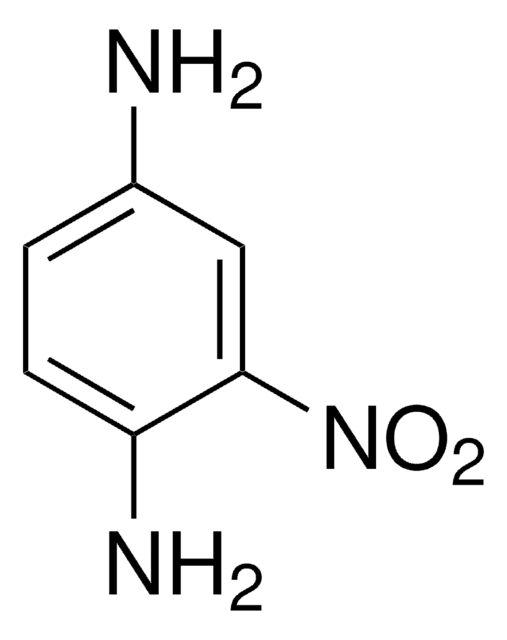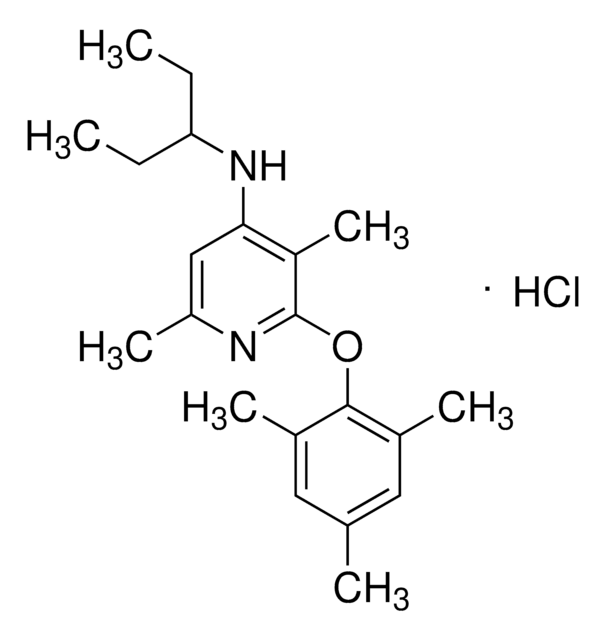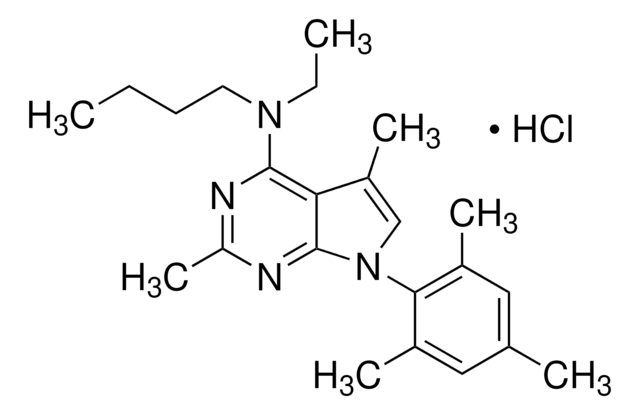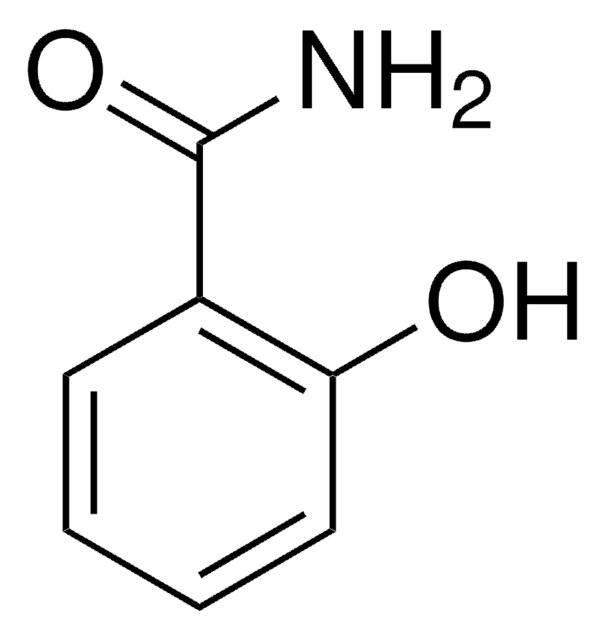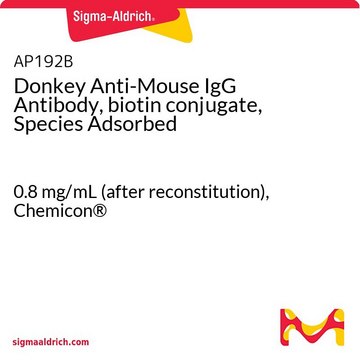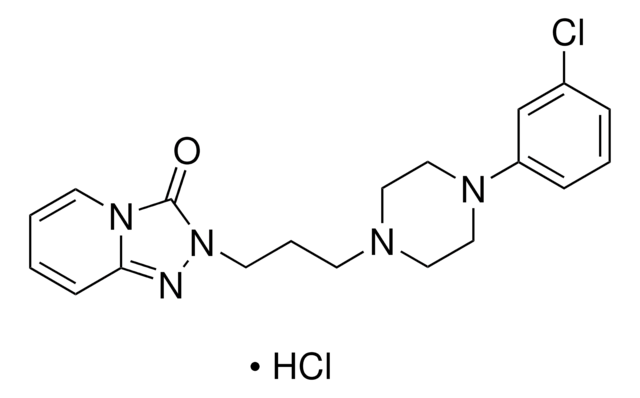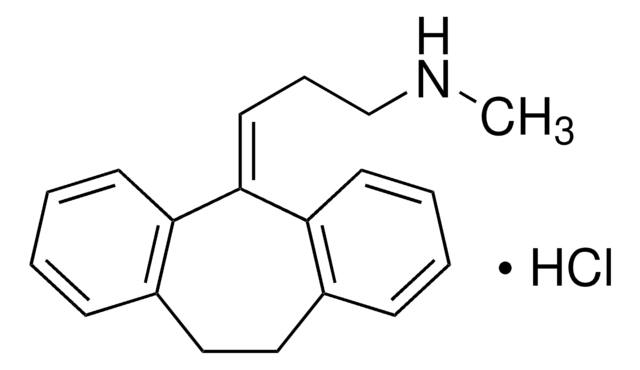A8727
Antalarmin hydrochloride
≥98% (HPLC), solid, CRF1 antagonist
Synonyme(s) :
N-Butyl-N-ethyl-2,5,6-trimethyl-7-(2,4,6-trimethylphenyl)-7H-pyrrolol[2,3-d]pyrimidin-4-amine hydrochloride
About This Item
Produits recommandés
product name
Antalarmin hydrochloride, ≥98% (HPLC), solid
Niveau de qualité
Pureté
≥98% (HPLC)
Forme
solid
Conditions de stockage
desiccated
Couleur
off-white
Solubilité
DMSO: >10 mg/mL
Température de stockage
2-8°C
Chaîne SMILES
Cl[H].CCCCN(CC)c1nc(C)nc2n(c(C)c(C)c12)-c3c(C)cc(C)cc3C
InChI
1S/C24H34N4.ClH/c1-9-11-12-27(10-2)23-21-18(6)19(7)28(24(21)26-20(8)25-23)22-16(4)13-15(3)14-17(22)5;/h13-14H,9-12H2,1-8H3;1H
Clé InChI
CGDGXEDXEXACKQ-UHFFFAOYSA-N
Application
- to study its effect on stress-induced tryptophan hydroxylase 2 activity
- to study the anxiogenic effects of corticotropin-releasing factor 1 (CRF1) activation
- to analyze the therapeutic effect of blocking corticotrophin-releasing hormone (CRH) signaling in treating social stress-induced depression
Actions biochimiques/physiologiques
Caractéristiques et avantages
Code de la classe de stockage
11 - Combustible Solids
Classe de danger pour l'eau (WGK)
WGK 3
Point d'éclair (°F)
Not applicable
Point d'éclair (°C)
Not applicable
Équipement de protection individuelle
Eyeshields, Gloves, type N95 (US)
Certificats d'analyse (COA)
Recherchez un Certificats d'analyse (COA) en saisissant le numéro de lot du produit. Les numéros de lot figurent sur l'étiquette du produit après les mots "Lot" ou "Batch".
Déjà en possession de ce produit ?
Retrouvez la documentation relative aux produits que vous avez récemment achetés dans la Bibliothèque de documents.
Notre équipe de scientifiques dispose d'une expérience dans tous les secteurs de la recherche, notamment en sciences de la vie, science des matériaux, synthèse chimique, chromatographie, analyse et dans de nombreux autres domaines..
Contacter notre Service technique